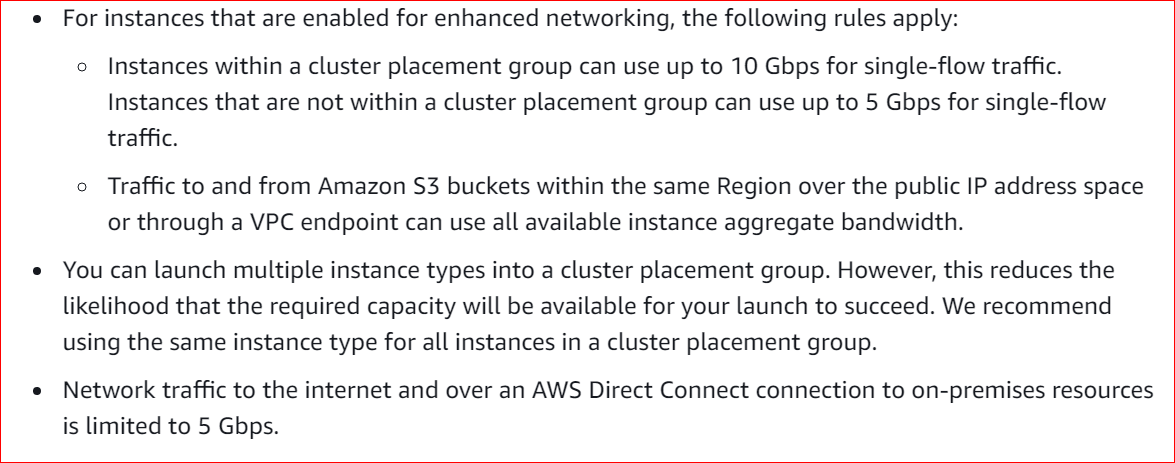Building High-Performance Networking for VPCs
Question
A project you are part of as a Solutions Architect has a latency-sensitive workload requirement despite availability.
You have to consider building high-performance networking for their VPCs to operate based on SLAs already signed as part of the contract.
Which two statements in this context are correct? (Select TWO)
Answers
Explanations
Click on the arrows to vote for the correct answer
A. B. C. D. E.Answers: B, C.
A cluster placement group is the only one providing high-performance networking.
It is also possible to migrate instances between placement groups, but merging placement groups is not supported.
Option A is incorrect because cluster placement groups cannot span multiple regions.
Option D is incorrect because you cannot merge placement groups.
Option E is incorrect because a spread placement group is more appropriate for availability scenarios.
References:
https://docs.aws.amazon.com/AWSEC2/latest/UserGuide/placement-groups.html
The correct statements in this context are A and B.
A. A cluster placement group is appropriate for this use case as long as the grouping of instances stays within a single Availability Zone unless using peered VPCs to span multiple regions.
Explanation: A cluster placement group is a logical grouping of instances within a single Availability Zone that provides low-latency network performance by ensuring that the instances are located on the same underlying hardware. It is appropriate for this use case as it ensures that the instances are in close proximity to each other, which can help reduce network latency. However, if using peered VPCs to span multiple regions, then the instances in the placement group must be in different Availability Zones.
B. A cluster placement group is appropriate for this use case because of a higher per-flow throughput limit of up to 10 Gbps except for the traffic over an AWS Direct Connect connection to on-premises resources.
Explanation: A cluster placement group has a higher per-flow throughput limit of up to 10 Gbps compared to other placement group types. This is because the instances in a cluster placement group are located on the same hardware and can communicate with each other at very low latencies. This makes it appropriate for a latency-sensitive workload requirement. However, this limit does not apply to traffic over an AWS Direct Connect connection to on-premises resources.
C. You can migrate an instance from one placement group to another but cannot merge placement groups.
Explanation: Instances can be migrated from one placement group to another using the AWS Management Console, AWS CLI, or AWS SDKs. However, it is not possible to merge placement groups. Therefore, if you need to combine instances from multiple placement groups, you would need to launch new instances in a new placement group and migrate your application to those instances.
D. You can migrate an instance from one placement group to another and merge placement groups.
Explanation: This statement is incorrect. As explained in the previous explanation, it is not possible to merge placement groups. Instances can be migrated from one placement group to another using the AWS Management Console, AWS CLI, or AWS SDKs.
E. A spread placement group is appropriate for this use case but if you start or launch an instance in the group and there is insufficient unique hardware, the request fails and you have to try again.
Explanation: A spread placement group is a logical grouping of instances that are spread across distinct underlying hardware to reduce the risk of simultaneous failure. While it can be appropriate for certain use cases, it is not the best choice for a latency-sensitive workload requirement as it cannot guarantee low latency between instances. Additionally, if you start or launch an instance in a spread placement group and there is insufficient unique hardware, the request fails and you have to try again.